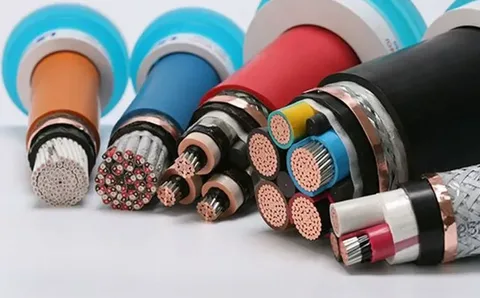| Introduction The High Voltage Cables and Accessories Market plays a critical role in enabling reliable and efficient electricity transmission across long distances. As global energy demand rises and renewable integration expands, the need for robust high-voltage transmission infrastructure has become indispensable. High voltage cables (rated above 33kV) and their accessories—including terminations, joints, and connectors—are essential for power transmission in utilities, offshore wind farms, industrial facilities, and urban infrastructure. With modernization of aging grids and rapid electrification, this market is witnessing unprecedented growth worldwide. Market Drivers One of the primary growth drivers for this market is the expansion of renewable energy. Offshore and onshore wind, solar, and hydroelectric projects require extensive high-voltage networks to connect generation sites to the grid. Governments across Europe, Asia, and North America are heavily investing in transmission infrastructure to support their clean energy targets. The increasing demand for reliable and uninterrupted electricity in industrial and commercial sectors is another key factor. Rapid urbanization, data center expansion, and smart city development are accelerating demand for advanced high-voltage systems. Additionally, technological advancements such as cross-linked polyethylene (XLPE) insulation and extra-high voltage direct current (EHVDC) cables have improved transmission efficiency and reduced losses over long distances. Market Challenges Despite its strong growth potential, the market faces challenges. High installation and maintenance costs remain a major barrier, particularly for underground and submarine cable systems. The complexity of manufacturing and laying high-voltage cables, coupled with land acquisition and regulatory hurdles, often results in project delays. Moreover, environmental and safety concerns—such as cable overheating, fire risks, and electromagnetic interference—necessitate strict compliance with international standards. The limited availability of skilled labor and technical expertise in cable installation and fault detection also impacts project timelines and reliability. Market Opportunities The transition toward smart grids and renewable integration presents substantial opportunities for the market. As nations invest in grid digitalization and energy storage systems, high-voltage cables will serve as the backbone for power flow management. Offshore wind projects, especially in Europe and Asia-Pacific, are creating a surge in demand for submarine HV cables. Another major opportunity lies in high-voltage direct current (HVDC) technology, which enables efficient long-distance power transmission with minimal losses. HVDC systems are being widely adopted in interregional and cross-border power projects, such as those connecting offshore wind farms to mainland grids. Additionally, the electrification of transport infrastructure—including railways, metros, and charging networks—will further enhance market growth. Regional Insights The Asia-Pacific region dominates the market, driven by massive investments in grid expansion and renewable energy in China, India, and Japan. China’s ultra-high-voltage (UHV) projects and India’s transmission modernization initiatives are creating consistent demand for HV cables and accessories. Europe follows closely, propelled by offshore wind installations and interconnector projects between countries such as the UK, Germany, and the Netherlands. The region’s emphasis on carbon neutrality and clean energy transition under the European Green Deal continues to support infrastructure expansion. In North America, the U.S. and Canada are focusing on grid resilience and renewable integration, upgrading outdated transmission lines with modern HV cable systems. Meanwhile, the Middle East and Africa are emerging markets, where nations like Saudi Arabia and UAE are investing heavily in power infrastructure to support industrial diversification. Future Outlook The future of the High Voltage Cables and Accessories Market looks promising as nations worldwide commit to energy transition and grid modernization. Technological innovation will continue to shape the market, with growing use of superconducting cables, improved insulation materials, and digital monitoring systems for predictive maintenance. The market will also benefit from strategic public-private partnerships aimed at developing smart and resilient transmission networks. Submarine cable installations are expected to see rapid growth, connecting offshore renewable sites and supporting undersea interconnections between nations. As renewable generation and electricity consumption both rise, the market will remain central to achieving global decarbonization targets. Conclusion The High Voltage Cables and Accessories Market is the invisible force powering global electrification. As renewable energy, smart grids, and electrified transport expand, high-voltage transmission systems will continue to form the backbone of sustainable energy infrastructure. With advancements in materials, installation technologies, and digital solutions, this market is set to play a vital role in shaping a reliable and green power future. |
